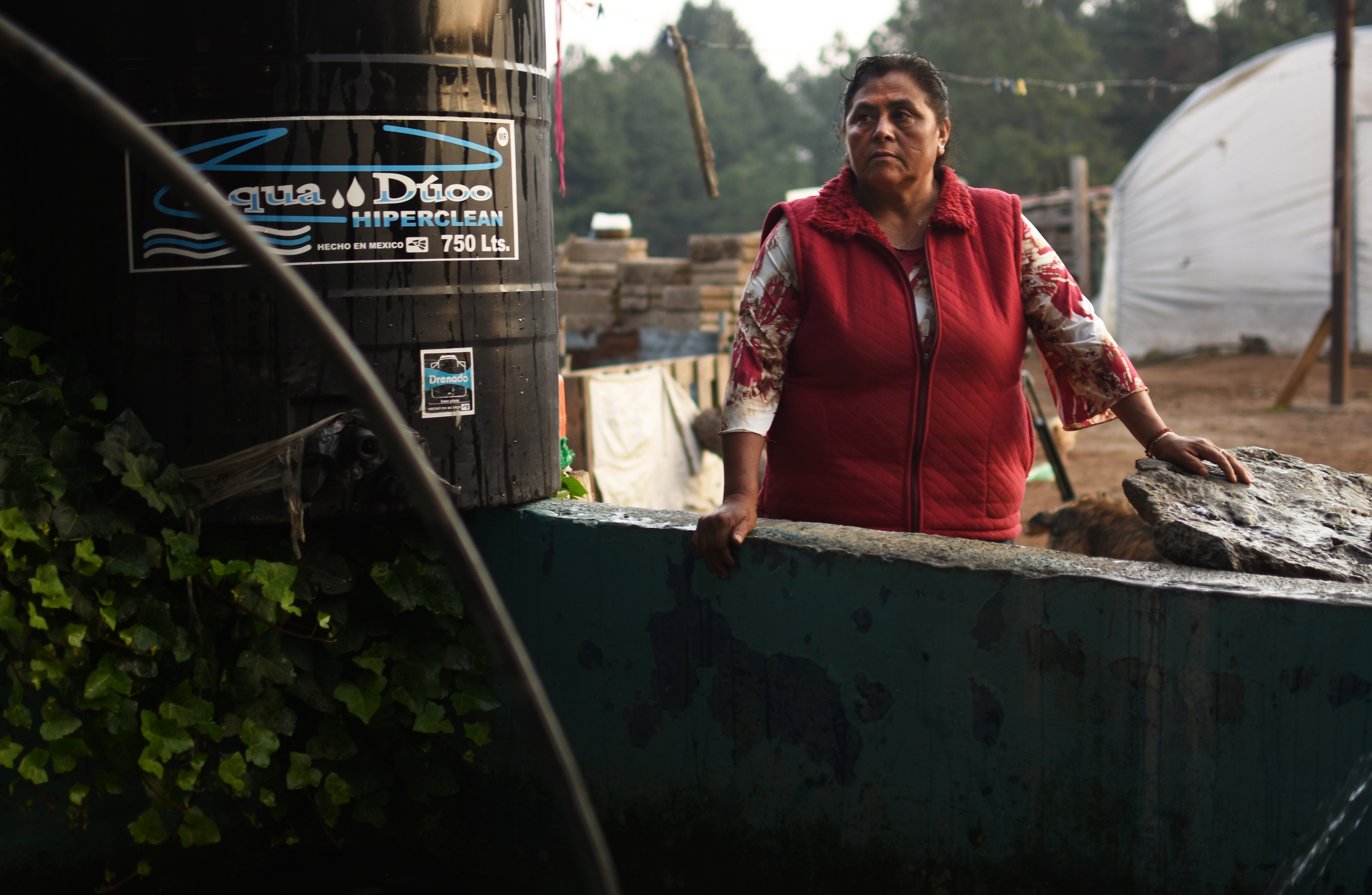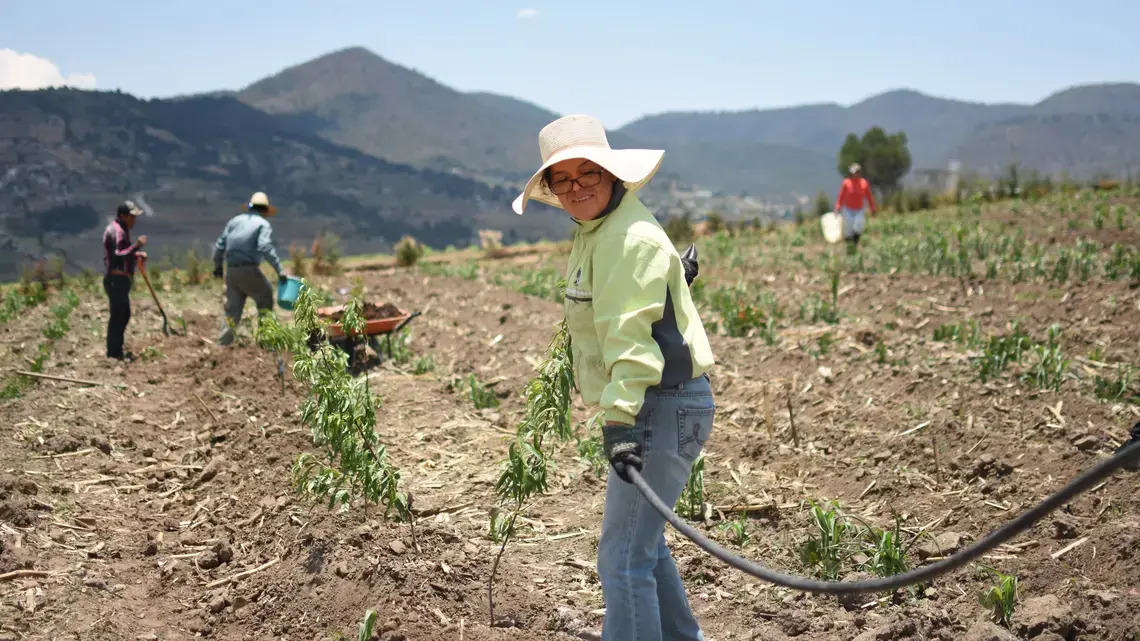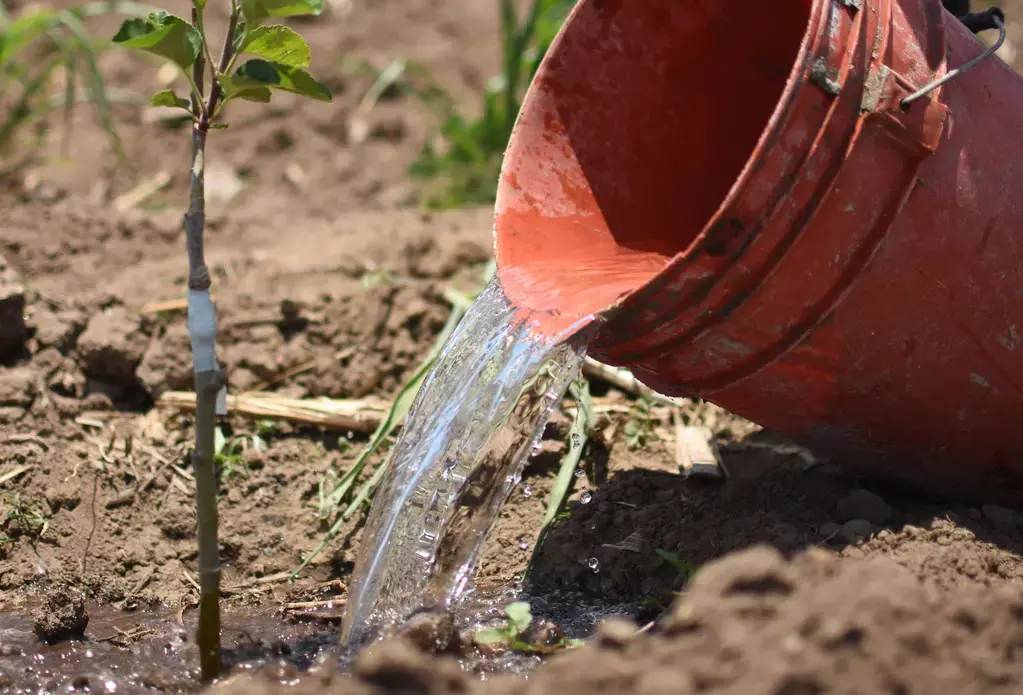Rocio Albino Garduño and her family live in the hills of San Juan Coajomulco, Mexico, a region native to the Mazahua indigenous community. While driving up the rocky incline of her small farming community, I didn't expect to find a sustainability utopia.
The houses were scattered among farming plots. Garduño and her husband Horacio Santiago Mejía—both professors—spent years designing a more water-and-energy-efficient home. Garduño teaches sustainable development and Mejía teaches agricultural science. As an anomaly in their poor farming community, they use their home as the primary classroom to teach their neighbors and university students about more sustainable practices.
The home is modern and minimal, but still feels cozy. The walls are made of a mixture of mud, straw, sand, and other natural resources. Their toilet does not use water, but instead composts their waste with ash and dirt. The house is solar powered and their shower uses rainwater.
Education is one of the main reasons they live where they do. Garduño feels that when a community's environment is healthy, so are its people, and she wants to spread that idea to her neighbors and students.
As professors passionate about sustainability, they bring their work home with them. In front of Garduño's house is a farm that uses an intercropping system non-traditional to the area. Through their work, Garduño and Mejía push their community to improve current practices to both better the environment and their lives.
The community almost exclusively grows corn. Corn agriculture adds more than just nutritional value for the Mazahua region.
"Corn is the center of our culture, part of our life and body. There are rituals, many, almost one every month related to the agricultural cycle in the cornfield celebration," Garduño said.
There are about 600 ways to cook corn in Mexico, according to Garduño. Growing corn is a part of daily life and culture; it even plays a role in family roles. The practices related to corn are passed down from generation to generation.
"Management of the plot indicates periods of growth of the person.There are very distinct roles. For example, it is women who put the seed in the ground and they select and store the seed. Men are responsible for heavy work," Garduño said.
Additionally, a young man is considered an adult when he can load a sack of corn cobs. A woman is fit to marry once she can make tortillas. Children are considered "grown" once they can take on simple tasks in the cornfield.
But the practice of growing corn exclusively and using herbicides has caused the diversity of corn seed to decrease. Garduño advocates for a polyculture system that plants fruit trees and other crops among the corn to improve moisture retention, decrease water erosion, encourage diverse diet, and increase family income.
A 2002 working paper by Nadia El-Hage Scialabba and Douglas Williamson from the Food and Agricultural Organization of the United Nations explains that this intercropping system can be beneficial for small-scale farmers.
"By interplanting, farmers achieve several production and conservation objectives simultaneously. With crop mixtures, farmers take advantage of the ability of cropping systems to reuse their own stored nutrients and the tendency of certain crops to enrich the soil with organic matter," El-Hage Scialabba and Williamson wrote.
Rocio further explained how the system can prevent erosion.
"This barrier created by trees makes water not flow away and be retained, eventually creating terraces," Garduño said. "Environmentally, it decreases erosion and in terms of nutrition it creates diversification for diets."
Additionally, it reduces the need for pesticides. Growing several crops simultaneously prevents the build-up of pests and minimizes the need to use expensive and dangerous chemical insecticides.
This system not only has environmental benefits, but also health and financial benefits as well. Because growing crops like fruit trees isn't common in the area, those crops can be sold in markets for additional income and will improve families' diets.
Garduño admits that it can be difficult to change the ways of a community that has been growing the same crops for generations. As part of the coursework, Rocio and her husband invite their students to both work in the farm and spend time in their home.
Their educational approach is to live in the community and spend time with the people. They don't lecture others about their practices, but instead invite them to experience what they have created.
"I invite my neighbors to go and show them it is possible to do so. I'm using rainwater and it works for me and I'm using a solar heater and it works for me and I'm paying less for gas," Garduño said.
Through the university, Garduño and her husband are building a new generation of farmers.
"I see the students who are interacting with people to spread technology or to participate in community development. It makes me feel very fulfilled," Garduño said.









